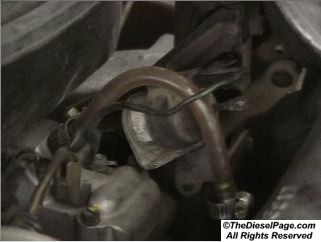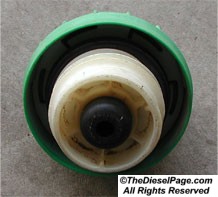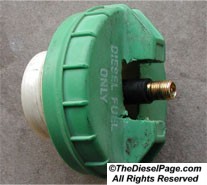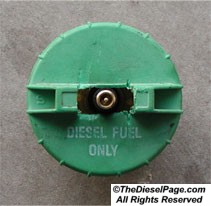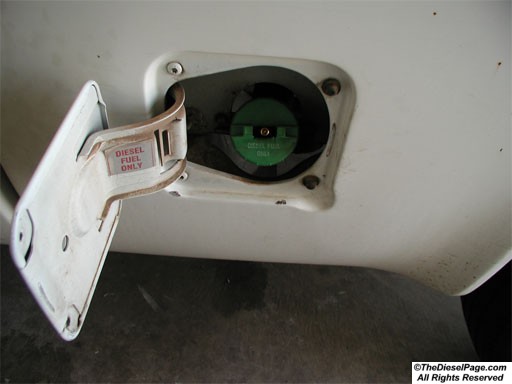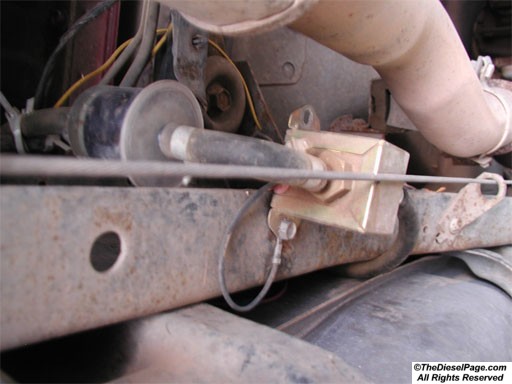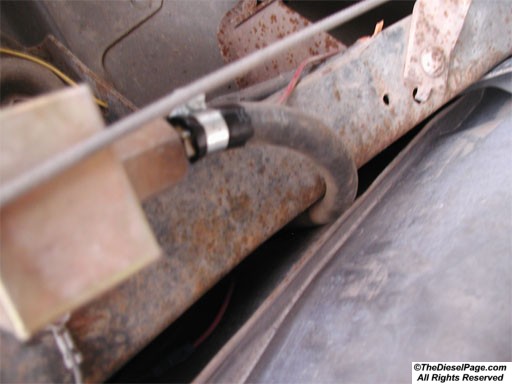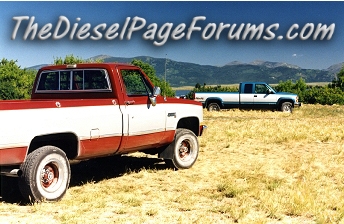 Finding Air In The Fuel System, A Tutorial!
Finding Air In The Fuel System, A Tutorial!
Air in the fuel system always has some kind of negative impact on the overall engine performance of a diesel engine. Unlike gassers that don't have a big issue with it, our diesel's object to little air bubbles.
I had to troubleshoot air entering the fuel system of my '82 shortbox truck recently, so I thought I'd share how I found the leak.
I didn't "invent" the tools or come up with the idea, so credit will be given where it is needed.
First off, the symptoms. Rough idle, surging (varying RPM when sitting at a light) and (more common) a hard first start in the morning!
What you'll need:
-1/4" ID clear tubing, hose clamps to replace spring type clamps used OEM.
-Spare fuel filler cap (found at the parts store, or your neighbors truck)
-Schrader Valve (ok, it's really just a valve stem core with valve)
-Drill Bits, drill
-Dikes (not the lesbo type, the hand tool!)
-Air compressor, or air tank filled with air.
-Tire pressure gauge (that will measure as little as 5 psi).
Finding out that you have air in the fuel system is the first task. To do this you'll need the 1/4" ID hose to replace the fuel return hose coming out of the Injection pump. When the engine was running I was able to see small air bubbles traveling through the line, bad sign. See the video clip below: ~2MB MPEG clip
Next, you'll need to make your fuel pressure cap capable of handling the Schrader Valve. That's what the drill and bits will be for as well as the dikes to notch the top of the filler cap. You're basically on your own on this one, I had to gut the pressure relief stuff out of mine cleanly. I borrowed this idea from Britannic, this is just the application of that idea.
See Pictures
Next, install your newly created creature into the filler nozzle of the tank that's giving you fits. In my case it was on the drivers side, the main tank I use when filling up.
After inserting the modified cap, you'll need the air compressor and tire gauge. I used no more than 10psi of air pressure on a tank that was half full (not half empty). The idea is to pressurize the tank and force fuel out where the leak is. Under normal operating circumstances, the fuel lines will be under a vacuum from the lift pump pulling fuel from the tank, and in this case, air. Adding pressure will force the leak to be known.
What I found is that an aftermarket electric lift pump that had been installed by the previous owner had some crappy hose clamps on it.
After fixing that leak, normal operation had been restored.
I then carefully bled the air pressure off the fuel tank with the valve, but it would have done it anyways because my valve and cap leaks (and i suspect yours will too, unless you use a little silicone during assembly).
I was then able to remove the clear tubing off the return side of the Injection Pump, because the type of hose I was using isn't really intended for use with fuel.
Hope this helps! Any questions in relation to this topic should be posted! Comments? Something that can be added?
-edited, because I can't type or spell correctly!
Last edited by john8662; 05-24-2006 at 07:23.
1982 C10 SCSWB 6.5TD, mods too extensive to list. (13.69 1/4 mile @94.6 MPH) RACE TRUCK
1982 C10 SCSWB 6.2NA, 2.73 700
1986 C10 SCLWB 6.2TD 3.73 700
1989 V20 SUB 6.2NA, 3.73 400
1994 G20 VAN 6.5NA, 3.42 60E
1994 K20LD ECSWB 6.5TD, 3.42 80E
1995 K20 SUB 6.5TD, Wrecked, ran into by stupid teen.
1995 C3500HD DRW 6.5TD, 12' Flatbed 5.13 80E
1995 C3500HD DRW 6.5TD, 18' Rollback Wrecker 4.63 80E
1994 C20HD ECLWB 6.5TD 3.73 80E Wifes Truck.
1995 C20LD ECSWB 6.5TD 3.73 80E
1995 K20LD SCLWB 6.5TD 3.73 80E
1996 K30 DRW 6.5TD 4.10 80E
1997 C10 Tahoe 2Door 2WD 5.7L to 6.5 Conversion Underway






